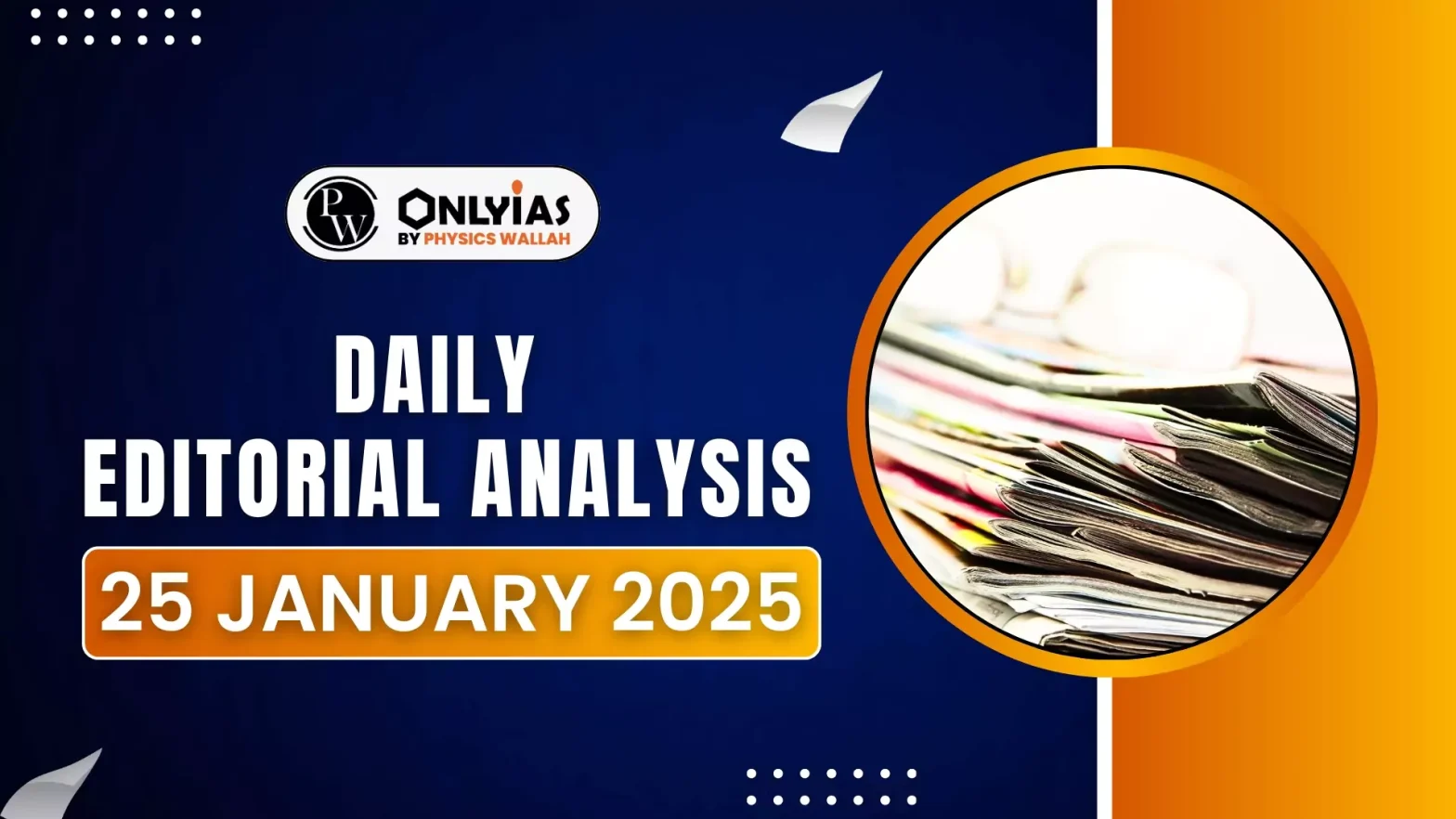On the 75th anniversary of the coming into effect of the Constitution of India, it is imperative to evaluate the journey of the Indian state from the perspective of its foundational values before we plan the course ahead.
Significance of Dr. Ambedkar’s Closing Address
- Emphasis on Unity: Dr. Ambedkar raised concerns about whether Indians could transcend divisions of caste, religion, and creed to place the country first.
- Timeless Lessons: His words continue to inspire introspection, urging citizens to guard the Constitution and uphold its values of liberty, equality, and fraternity.
- Vision for the Republic: The speech outlined the responsibilities of citizens in ensuring that democracy thrives, and the nation progresses on the principles enshrined in the Constitution.
Enroll now for UPSC Online Classes
Key Issues of Federalism in India
- State vs. Governor Conflicts: Frequent tussles between State governments and Governors have reached the Supreme Court.
- Simultaneous Elections: Debates inside and outside Parliament about conducting simultaneous elections highlight challenges to State autonomy.
- Fiscal Federalism: States struggle with the dual pressure of the Finance Commission and Goods and Services Tax (GST) regime.
- For example: Southern states have expressed concerns over paying higher taxes while receiving fewer benefits in return.
- Delimitation: The next delimitation exercise is likely to deepen tensions between the Union and States, especially for those States that have effectively controlled their population growth.
- For example: Southern states, for instance, might see a reduction in political representation if the delimitation is based on the latest census, which reflects population disparities.
- Neglect of Regional Languages: Languages like Tamil, Kannada, Bengali, and Marathi face neglect, raising concerns over multilinguistic equality.
- Constitutional Position: While federalism is not explicitly mentioned in the Constitution, courts have upheld it as part of its basic structure (e.g., S.R. Bommai vs Union of India, 1994).
- Dr. Ambedkar’s Perspective: Emphasized that the Union and States are co-equal, with the Union’s overriding powers reserved only for emergencies.
Challenges to Social Democracy
- Police State: Critics argue that the country is evolving into a police state, citing Sedition laws, stringent statutes like the Unlawful Activities (Prevention) Act (UAPA) and Prevention of Money Laundering Act (PMLA).
- These laws are perceived as curbing dissent and suppressing freedoms, contradicting the principles of liberty.
- Social and Economic Inequalities: Persistent caste-based divisions and growing economic disparities challenge the promise of equality enshrined in the Constitution.
- Questions remain about whether various social groups have achieved an equitable standing in society.
- Challenges to Fraternity: Caste divisions and social stratification continue to hinder the sense of fraternity needed to foster a cohesive national identity.
- Dr. B.R. Ambedkar’s concern that an “Indian nation” would remain a delusion without eliminating caste remains relevant.
- Revamping the Constitution: Some groups advocate for replacing the Constitution with an “Indic” document based on Hindu dharmic concepts.
- This suggestion undermines the collective wisdom of the Constituent Assembly and the principles of inclusivity and equality enshrined in the Constitution.
Way Forward
- Constitutional Values: The Constitution thrives only when its principles are upheld by all: judges, bureaucrats, politicians, activists, journalists, and citizens.
- Dr. Ambedkar’s Call: Citizens must defend democratic principles and ensure governance aligns with constitutional ideals.
Check Out UPSC NCERT Textbooks From PW Store
Conclusion
India today needs guardians who can place the country above their creed more than ever: they need to be guardians in the form of judges, bureaucrats, politicians, activists, journalists and citizens.
Ready to boost your UPSC 2025 preparation? Join PW’s UPSC online courses today!
![]() 25 Jan 2025
25 Jan 2025

